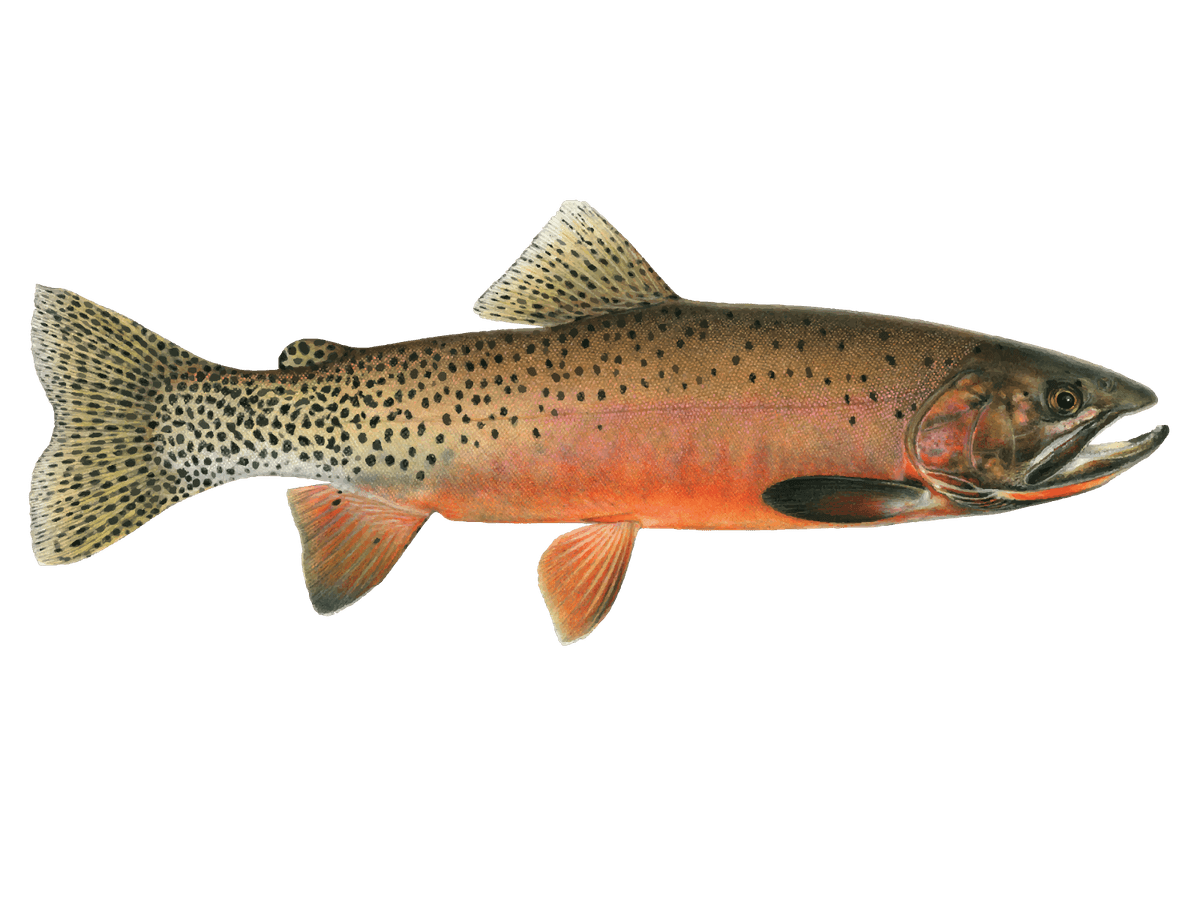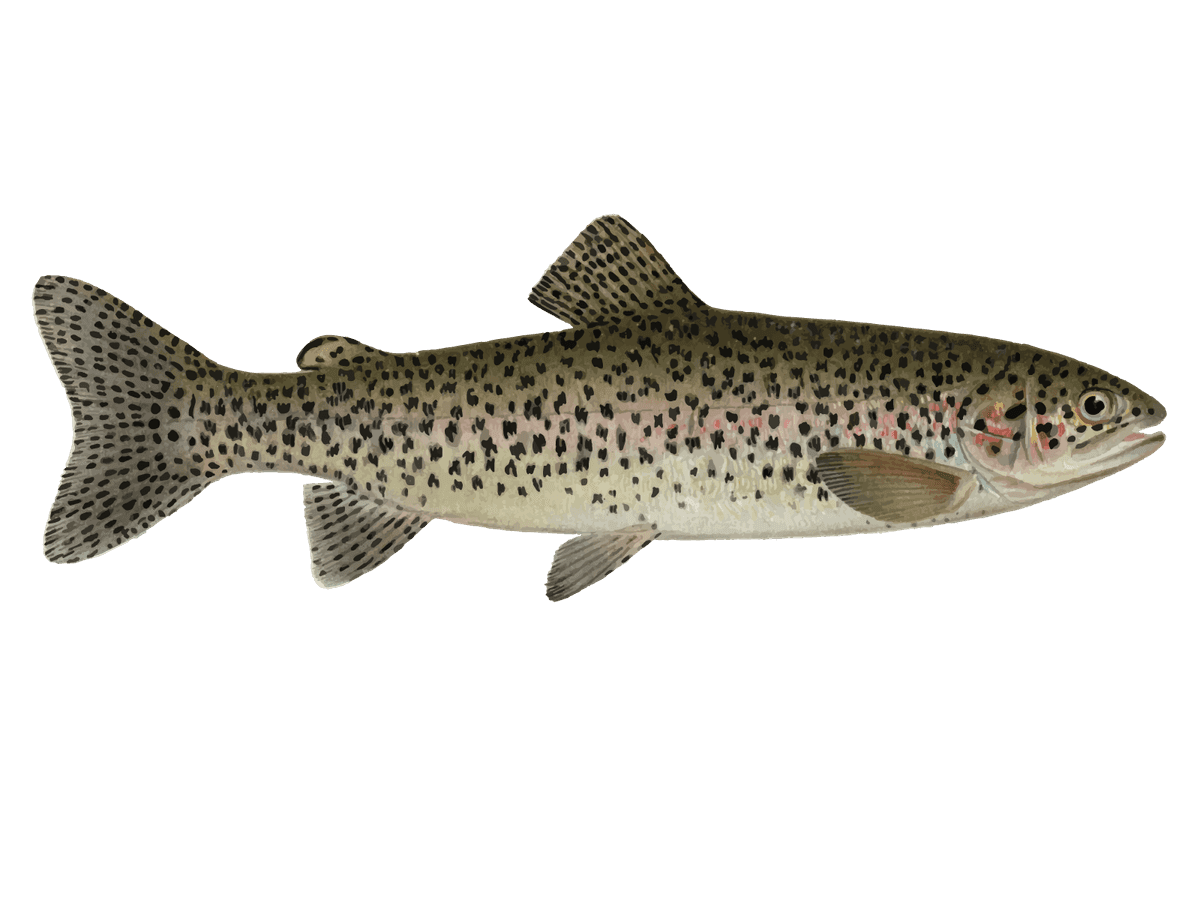Learn Fly Fishing on Arkansas' Scenic White River
- Published Date: July 23, 2025
- Fishing
- Cotter
- $350 - $450 price range
- Updated Date: October 11, 2025
Summary
Looking to try fly fishing for the first time? Brandon Cowan from Three Rivers Trout Guide Service has you covered with this half-day trip on Arkansas's White River. You'll learn the basics of fly casting and get a chance to hook some beautiful trout in a picturesque setting. The calm waters here are perfect for beginners, and Brandon knows all the best spots. He'll show you how to read the water, choose the right flies, and land your catch. The White River is home to several trout species, including Browns, Rainbows, and the less common Brook and Cutthroat. Even if you're new to fishing, you've got a good shot at reeling one in. This trip is a great way to get your feet wet (literally) in the world of fly fishing. With room for up to three people, you can bring along a couple friends or family members to share the experience.
%2F%2Fusers%2Fe3327c88-6914-418f-8a64-ad7e9dba1b8f%2Fratecard%2F469224363_1097788942026414_372737241193194459_n.jpg&w=1200&q=75)
Rods, Reels, and Ripples


Catch Your First Trout on the White River
Ready to try your hand at fly fishing? This half-day trip on Arkansas' White River is perfect for beginners looking to learn the ropes. You'll be in good hands with Brandon Cowan, our seasoned guide who knows these waters like the back of his hand. The White River's calm stretches create an ideal classroom for newbies, and you'll have a shot at landing some of the river's famous trout species. Whether you're 8 or 80, this trip is all about having fun while picking up a new skill in one of the prettiest spots in the Natural State.
What to Expect on the Water
We'll meet up bright and early at the put-in, where Brandon will get you fitted with waders and boots if you need 'em. After a quick safety rundown, we'll hop in the boat and motor to our first fishing spot. Brandon will show you the basics of casting, reading the water, and presenting your fly. Don't worry if you've never held a rod before – we'll take it nice and slow. The White River's gin-clear water lets you see the trout, which is a huge help when you're learning. We'll fish from both the boat and wade in some shallow areas, giving you a taste of different techniques. By the end of our four hours, you'll have the foundations to build on and hopefully a few fish stories to tell!
Fly Fishing 101
Fly fishing might look tricky, but it's all about rhythm and finesse. We'll start with roll casting, which is easier for beginners to get the hang of. You'll learn how to "mend" your line to get a drag-free drift and how to set the hook when a trout strikes. Brandon will show you how to tie on flies and explain which patterns work best for different conditions. We use light tackle here – usually 5-weight rods with floating lines. The flies we'll toss are typically small nymphs or dry flies, depending on what the fish are hitting. Don't sweat the gear; we've got quality Orvis setups for you to use. Just bring a good attitude and be ready to learn!
Species You'll Want to Hook
The White River is home to four trout species, each with its own personality. Rainbow Trout are the most common catch and put up a fun fight for their size. They average 12-16 inches but can get much bigger. Rainbows are eager biters and great for beginners to target.
Brown Trout are the trophies of the White. These clever fish grow to monster sizes here, with 20+ inchers not uncommon. They're more challenging to fool but oh-so-rewarding when you do. Browns tend to hunker down during the day and feed more actively in low light.
Brook Trout, or "brookies," are the beauty queens of the river. Their vibrant colors and delicate patterns make them a favorite among anglers. They're typically smaller than rainbows or browns but make up for it in feistiness.
Cutthroat Trout are less common but always a treat to catch. Named for the distinctive red slash under their jaw, cutthroats are native to western U.S. rivers and were introduced to the White. They're known for their willingness to rise to dry flies, making for exciting topwater action.
Why Anglers Keep Coming Back
The White River isn't just another trout stream – it's a world-class fishery right in the heart of the Ozarks. The dam-controlled flows keep the water cool year-round, supporting a massive population of trout. But it's not just about the fish. The scenery here is something else, with limestone bluffs, crystal clear water, and lush forests lining the banks. Wildlife sightings are common – keep an eye out for bald eagles, otters, and even the occasional black bear.
What really sets the White apart is its accessibility. You don't need to hike miles into the backcountry or be an expert caster to have a great day on the water. It's the perfect place to learn, with plenty of room to grow as an angler. And let's not forget the Southern hospitality – folks around here are always happy to share tips or swap stories at the local fly shop.
Time to Book Your Spot
If you've been thinking about giving fly fishing a try, this is your chance to learn from one of the best in a truly special place. Our half-day trip is designed to give you a solid foundation in fly fishing techniques while enjoying the natural beauty of the White River. You'll come away with new skills, maybe a few fish photos, and definitely a newfound appreciation for the art of fly fishing. Plus, you'll have a local's insight on where to fish if you want to explore more on your own.
Spaces fill up fast, especially during prime seasons, so don't wait to book your trip. Whether you're looking for a unique way to spend a morning on vacation or want to kickstart a new hobby, we've got you covered. Grab your hat and sunglasses, and let's go catch some trout!
Learn more about the species
Brook Trout
Brook trout are the jewels of our mountain streams, typically 6-12 inches long. You'll find them in cold, clear waters, often hiding near fallen logs or undercut banks. They're most active in the cooler months, with fall being prime time as they put on their spawning colors. Brookies are known for their aggressive feeding and willingness to take flies, making them great for beginners. Anglers love their vibrant colors and the remote, scenic places you find them. They might not be the biggest fish, but they make up for it in beauty and eagerness to bite. For best results, use light tackle and small flies. A local tip: try drifting a small nymph under an indicator through pocket water. Brook trout can't resist an easy meal floating right by their nose.

Brown Trout
Brown trout are crafty predators, averaging 12-20 inches but can grow much larger. Look for them in deeper pools, undercut banks, and near logs or boulders. They're most active at dawn and dusk, especially on cloudy days. Fall is prime time as they get aggressive before spawning. Browns are known for their selective feeding and wary nature, making them a fun challenge. Anglers love their hard-fighting spirit and the skill it takes to fool them. For best results, use smaller flies and present them with a natural drift. A local trick: try tossing a streamer right up against the bank and stripping it back fast. Big browns can't resist ambushing what looks like fleeing prey. Just be ready for a explosive strike!

Cutthroat Trout
Cutthroat trout are a real treat to catch, usually ranging from 8 to 16 inches in our area. You'll find them in clear, cold streams, often hanging out near riffles or in pools with some cover. They're most active in the mornings and evenings, especially during summer. Cutthroats are known for their willingness to rise to dry flies, making them a favorite for fly anglers. They put up a spirited fight for their size and are beautiful fish to admire. Spring and early summer are great times to target them, as water levels drop and insect hatches pick up. If you're having trouble getting bites, try tying on a small terrestrial pattern like an ant or beetle. Cutthroats can't resist these land-based snacks when they fall into the water.

Steelhead Trout
Steelhead are sea-run rainbow trout, typically 24-30 inches long and weighing 5-12 pounds. They're known for their powerful fights and acrobatic jumps. You'll find them in deep pools and runs, especially near structure like boulders or fallen trees. Fall and spring are prime seasons, when they're migrating upriver to spawn. Anglers love targeting steelhead for the challenge - they're notoriously picky and can be tough to hook. But man, when you do connect, it's a rush like no other. These fish will test your gear and skills. For the best shot at landing one, try swinging flies with a two-handed rod. Cover lots of water and be patient. When a steelhead takes, set the hook hard and hang on tight!

About the Three Rivers - Stealthcraft
%2F%2Fusers%2Fe3327c88-6914-418f-8a64-ad7e9dba1b8f%2Fvehicle_picture%2F323714733_1252033202060871_736068260570771367_n.jpg&w=1200&q=75)
Vehicle Guest Capacity: 3
Manufacturer Name: Mercury 60/40 jet engine
Maximum Cruising Speed: 18
Number of Engines: 1
Horsepower per Engine: 40
Get ready to dip your toes into the world of fly fishing with a half-day trip on Arkansas's beautiful White River. Brandon Cowan, your knowledgeable guide from Three Rivers Trout Guide Service, will show you the ropes in one of the country's top trout fishing spots. Perfect for newcomers, this outing lets you learn the basics while surrounded by stunning natural scenery. You'll have a shot at catching several prized trout species, including Brown, Brook, Cutthroat, and Rainbow. The calm waters create an ideal environment for beginners to practice their casting and technique. Brandon's patient approach and deep understanding of the river ensure you'll come away with new skills and a true appreciation for this beloved angling art. Whether you're 8 or 80, this trip offers a fantastic introduction to fly fishing in a picturesque Arkansas setting.
%2Ffit-in%2F250x250%2Fguide_websites%2F11484%2Fimages%2Ftemplogossheet1.png&w=1200&q=100)
%2Fusers%2Fe3327c88-6914-418f-8a64-ad7e9dba1b8f%2Fimages%2Fsea-trout-cotter-fishing-2350.jpg&w=768&q=75)
%2Fusers%2Fe3327c88-6914-418f-8a64-ad7e9dba1b8f%2Fimages%2Frainbow-trout-fishing-ar-2493.jpg&w=768&q=75)
%2Fusers%2Fe3327c88-6914-418f-8a64-ad7e9dba1b8f%2Fimages%2Fsuccessful-fishing-trip-arkansas-2515.jpg&w=768&q=75)
%2Fusers%2Fe3327c88-6914-418f-8a64-ad7e9dba1b8f%2Fimages%2Frainbow-trout-fishing-cotter-2520.jpg&w=768&q=75)
%2Fusers%2Fe3327c88-6914-418f-8a64-ad7e9dba1b8f%2Fimages%2Fbest-great-fishing-haul-ar-3234.jpg&w=768&q=75)
%2Fusers%2Fe3327c88-6914-418f-8a64-ad7e9dba1b8f%2Fimages%2Fsea-trout-fishing-ar-2523.jpg&w=768&q=75)
%2Fusers%2Fe3327c88-6914-418f-8a64-ad7e9dba1b8f%2Fimages%2Fthrilling-fishing-trip-cotter-2407.jpg&w=768&q=75)
%2Fusers%2Fe3327c88-6914-418f-8a64-ad7e9dba1b8f%2Fimages%2Fcotter-rainbow-trout-catch-2535.jpg&w=768&q=75)
%2Fusers%2Fe3327c88-6914-418f-8a64-ad7e9dba1b8f%2Fimages%2Flone-angler-ar-fishing-excursion-2667.jpg&w=768&q=75)
%2Fusers%2Fe3327c88-6914-418f-8a64-ad7e9dba1b8f%2Fimages%2Frainbow-trout-cotter-fishing-2631.jpg&w=768&q=75)
